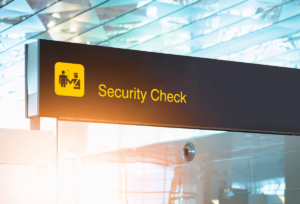Big changes are coming to the busiest single-runway airport in the world. Gatwick currently serves as the UK’s second busiest airport, with a record 40 million passengers passing through its terminals last year.
Having already announced plans to invest a whopping £1 billion into airport renovations before 2019, the pressure on Gatwick to reconfigure the current twin-terminal system has been at a record high. Since opening a north terminal in 1988, passengers have navigated the complex infrastructure of some of Gatwick’s largest airline operations.
The once humble easyJet has grown to become Gatwick’s most successful carrier, drawing a staggering 20 million passengers to the West Sussex airport in 2015. The result? A confused system that sees two easyJet operations running parallel to one another, with regularly scheduled departures from both the North and South terminals. Situated one mile apart, make your way to the wrong check-in desk and you could find yourself missing the boat altogether – or missing the plane, to be more precise.
It comes as no surprise then that among Gatwick’s countless plans for renovation is the relocation of some of its largest airlines. It’s a strategy that is sure to please even the most frequent travellers in the long run, but the sheer size and scope of the operation means it’s bound to cause some problems in the meantime. Keen to avoid the high-level disruption caused by the opening of Heathrow’s Terminal 5 in 2008, Gatwick have put in place plans that hope to see the reshuffle run as smoothly as possible.
What does the reshuffle involve?
Plans to consolidate carrier locations include moving all easyJet operations to the North Terminal, in turn pushing the entire British Airways structure south. Virgin Atlantic will also be moving north while smaller carriers including Thomson, Turkish Airways and Emirates look set to stay put for the time being.
When are the changes taking place?
While preparations are already underway, the bulk of the reshuffle looks set to take place throughout January 2017, with Gatwick officials hoping that configurations will be complete by the 25th of the month. The final easyJet flight is scheduled to depart from the South terminal on Monday 23rd January and marks the beginning of the most significant changes.
How might passengers be affected during the reshuffle?
The change consists of 42 individual steps and leaves little room for error. The good news is that passenger operations look set to continue throughout the duration of the shuffle, although there will be a limited service offered by many of the main carriers.
For instance, easyJet have announced plans to cut operations by 40% on Tuesday 24th and Wednesday 25th January, so it’s worth checking changes to specific departure times on these days. Virgin Atlantic and British Airways will swap places on the Tuesday evening, with plans to have services back up and running as usual by the following morning. Even so, passengers may prefer to set aside a little extra time when travelling during this period.
What changes can I expect to see afterwards?
Should everything go to plan, the reshuffle looks set to vastly improve the passenger experience at Gatwick. Decades of confusion will draw to a close as clear distinctions are made between North and South terminal carriers. The plans should also end disruption caused by flights departing from and returning to alternate terminals.
The changes will also give British Airways the chance to once again create its own premium passenger haven, no longer forcing the airline to split one commercial lounge. easyJet and Virgin are expected to make the most of their new homes too, with plans to renovate passenger lounges and check-in stations across the board.
Ready to explore the changes? Take a look at our great deals on flights departing from London Gatwick.




